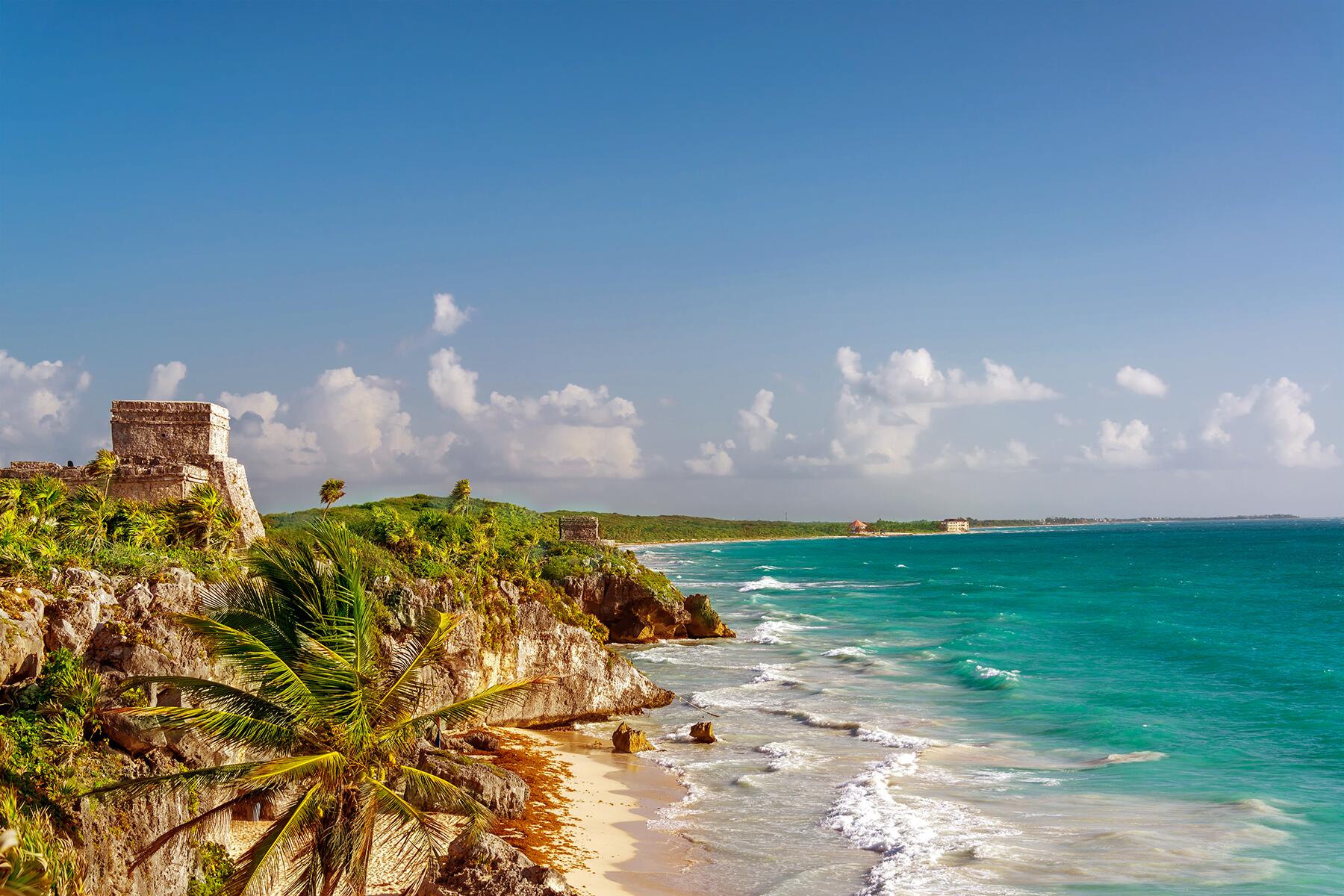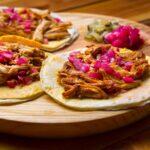From swimming in sparkling cenotes to indulging in mouthwatering cuisine, the city of Mérida is not to be missed.
Despite being the capital of Yucatán state, the largest and one of the coolest cities on the peninsula, inland Mérida is often overlooked in favor of Caribbean coastline highlights like hipster haven Tulum and party capital Cancún. And yet this two-time American Capital of Culture is worth more than an afterthought. So, on your next visit to the Yucatán Peninsula—which includes the states of Yucatán, Quintana Roo, and Campeche—here’s why you should spend some time getting to know laidback Mérida.
For the Ruins
Many people pass through the Yucatán capital on their way to Chichén Itzá but there are plenty of other underrated ruins near Mérida worth exploring. Use Mérida as a convenient jumping off point to explore lesser-known sites like Dzibilchaltún, Ek Balam, Cobá, or Uxmal, a UNESCO-listed ruin a little over an hour outside of town. All of the above offer the awe of Chichén Itzá, sans the busloads of tourists that descend daily from Cancún.
However, if you’re all set on visiting Chichén Itzá, Mexico’s New Wonder of the World, Mérida’s proximity to the photogenic pyramid does come in handy if you want to beat the crowds.
Recommended Fodor’s Video
For the Food
Oaxaca City may be Mexico’s current Queen of Cuisine, but Mérida is surely not far behind. As the capital of Yucatán, Mérida brings together dishes from across the peninsula, like chocolate and cheese-filled marquesitas (crispy rolled crepes), richly seasoned cochinita pibil (slow roasted pork), and indulgent panuchos (a bean-topped corn tortilla, piled high with cochinita pibil and pickled red onions).
Other must-try dishes in Mérida include sopa de lima (a clear broth served with lime, tortilla, and habanero chile), huevos motuleños (crispy tortillas spread with beans, then topped with a fried egg, ham, peas, a tomato sauce, and served with fried plantain), and papadzules (rolled tortillas filled with boiled egg and topped with sauce, pumpkin seeds, and chile).
For the Architecture
As one of Mexico’s best-preserved colonial cities, there’s plenty or architectural appeal in Mérida. Sixteenth century buildings encircle the city’s zócalo (central square), although the elaborate San Ildefonso Cathedral steals focus. Meanwhile, surrounding streets are dotted with multicolored casas, although it’s the Paseo de Montejo which architecture fans won’t want to miss. Constructed during the Porfiriato period, the Yucatán’s equivalent to the Champs-Élysées is lined with Beaux Arts homes. One especially noteworthy example is the Regional Museum of Anthropology.
For the Art
Unlike other popular Yucatán destinations like Playa del Carmen and Cancún, Mérida has a varied and thriving art scene. For the best art in Mérida, first stop by the Palacio del Gobierno (Government Palace) and admire the murals of Mérida-born Fernando Castro Pacheco. Completed in the seventies, they rival the work of Diego Rivera, one of Mexico’s other well-known muralists. If murals aren’t your thing there are plenty more Mérida galleries worth checking out though, including the SoHo Galleries, Yucatán Museum of Popular Art, and the MACAY (Museo Fernando García Ponce).
For the Small-Town Vibe
Expats may have cottoned onto the year-round summer appeal of Mérida long ago, but the city retains a laidback, small-town vibe tough to find in other cities on the Yucatán Peninsula. Whereas partiers spend their evenings traipsing the length of Quinta Avenida in Playa del Carmen or Coco Bongo-ing the night away in Cancún, Mérida comes alive with traditional, folkloric dancing in squares across the city or expansive handicraft markets. Put simply—Mérida moves at a different pace.
For the History
Haciendas (we’ll get to those), museums, and proximity to some of the peninsula’s oldest towns; Mérida offers history in spades. Learn about the Mayan culture at El Gran Museo del Mundo Maya, a sprawling museum situated in an almost jarringly modern building, get in-depth with anthropology at the Anthropology and History Museum, or skip town and pay a visit to Izamal, the oldest town on the Yucatán Peninsula. Also known as the Yellow City, Izamal is a Mexican magic town populated by yellow buildings, archaeological ruins, and handicraft stores galore.
For the Beaches
Mérida might be an inland city but that doesn’t mean you can’t make time for a beach day during your visit. Instead of stopping by the crowded Caribbean coastline, head north to the fishing village of Progreso where you’ll find more local families than foreign visitors. Head further west along the coast and you’ll soon hit Celestún. Best known for being home to flamboyances of flamingos, Celestún also has a tranquil stretch of sandy shoreline.
For the Culture
Alongside exploring the aforementioned Mayan history museums, you can also experience Mayan culture in Mérida by way of ball game reenactments. Once a week outside the cathedral, crowds gather to watch a Pok Ta Pok game during which two teams battle to score a goal. The catch? You can only hit the ball with your hips. Mayan culture aside, you can also learn more about haciendas in and around Mérida. While Sotuta de Peón is by far the best-known hacienda in the area, consider visiting the Ochil, Yaxcopoil, or Xcanatun Haciendas too.
For the Cenotes
The entirety of the Yucatán Peninsula is scattered with cenotes, fresh water sinkholes connected by underground cave systems. Once used in sacred Mayan rituals, cenotes are now popular swimming holes, many of which can be easily explored from Mérida. One of the best cenotes near Mérida is Cenote de Xlacah, which you’ll find at the Dzibilchaltún ruins (two birds, one stone!), but the Sambulá and San Antonio Mulix cenotes are also worth visiting. Find both of them just 40 minutes away from Mérida.
For the Artesanías
Few places do artesanías (handicrafts) quite like the Yucatán Peninsula, and as the peninsula’s largest city, you’ll be able to find examples of most of them in Mérida. Hammocks are by far and away the most popular and representative of all Yucatán handicrafts, but henequén products are also up there. Look out for woven baskets, textiles, and hats. Meanwhile, you can’t leave town without buying an embroidered blouse or guayabera.





